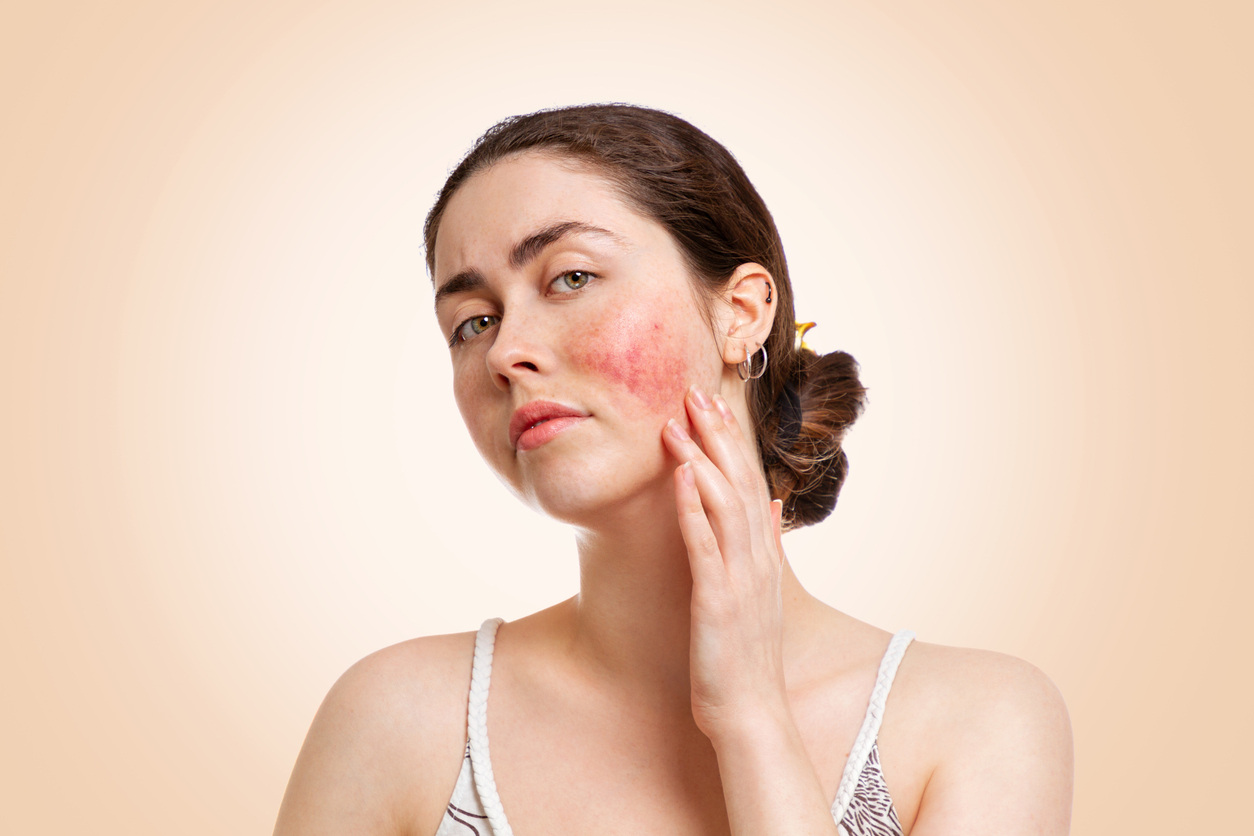As someone who works closely with patients battling rosacea, I know how challenging it can be to manage the redness, irritation, and sensitivity that come with this condition.
While traditional treatments like topical creams and antibiotics remain valuable, I’m excited about new advancements and holistic approaches that are making a real difference.
How gut health impacts rosacea symptoms
I can’t stress enough how important gut health is when it comes to managing rosacea.
Studies now show a direct connection between the gut microbiome and skin conditions like rosacea. For example, research from Johns Hopkins highlights a link between rosacea and irritable bowel syndrome (IBS), with inflammation being a common factor.
Healing the gut through an anti-inflammatory diet and cutting out processed foods can reduce rosacea symptoms significantly. I tell my patients all the time: our skin is a window into our internal health. Pay attention to what your body is telling you!
Another fascinating study in the British Journal of Dermatology suggests that Demodex mites may also play a role. These tiny mites live on the skin, and the bacteria they carry can trigger inflammation. This is just another piece of the puzzle in understanding how to treat rosacea effectively.
The best long-term solutions for rosacea flare-ups
For anyone feeling frustrated by recurring flare-ups, I always recommend starting with lifestyle changes. An anti-inflammatory diet, stress reduction, and avoiding common triggers like alcohol, sun exposure, and heat are crucial.
In terms of treatments, I’ve seen great results with Intense Pulsed Light (IPL) therapy and Sylfirm X microneedling with radio frequency. These technologies reduce redness and improve skin texture.
Often, I also recommend a combination of topical creams and low-dose antibiotics to manage flare-ups. It’s all about finding the right combination that works for you—it might take some trial and error, but the results are worth it.
IPL vs. laser therapy for rosacea: what’s the difference?
Patients often ask me how IPL compares to laser treatments for rosacea.
IPL, or photofacial therapy, uses a broad spectrum of light to target redness and broken capillaries. It’s been the gold standard for years and works beautifully to even out skin tone.
Laser treatments, on the other hand, focus on a single wavelength of light and can be better for specific skin concerns. With IPL, I typically recommend a series of 3-5 treatments spaced a month apart, followed by maintenance sessions about four times a year.
How Botox is helping rosacea patients
You may not know this, but Botox can be a game-changer for rosacea, especially for those dealing with flushing. Botox works by temporarily paralyzing small muscles in the skin that control blood vessel constriction and dilation. This helps reduce redness and flushing.
Botox also calms facial nerve activity, which is thought to contribute to inflammation in rosacea. While it’s not a cure, it’s an effective tool in combination with other therapies, like skincare, diet, and light-based treatments.
Combining treatments for the best results
In my practice, combination therapy is often the most effective way to manage rosacea.
For example, I frequently use Sylfirm X microneedling alongside a personalized skincare regimen and dietary guidance.
Avoiding triggers like heat, sun exposure, and stress is also critical.
My top skincare tips for sensitive, rosacea-prone skin
When it comes to sensitive skin, less is more. I’ve seen too many patients overwhelm their skin with too many products, causing irritation instead of relief.
Here’s what I recommend:
- Use gentle, hydrating cleansers
- Avoid over-exfoliating or using hot water on your face
- Stay hydrated and wear sunscreen daily, even on cloudy days
- Skip inflammatory and processed foods, sugar, and alcohol whenever possible
An inspiring rosacea success story
Years ago, I worked with a patient whose rosacea was so severe she could barely leave the house. The sun caused her physical pain, and her confidence had plummeted. Through photofacials, a customized skincare routine, and addressing her internal inflammation, we made incredible progress.
The moment she told me she had to cancel her next appointment because she was finally going on vacation was unforgettable. For the first time in years, she felt comfortable in her skin—and that’s why I do what I do.
Managing rosacea is possible with the right approach
While there’s no cure for rosacea yet, there are many effective ways to manage it and improve your quality of life. Whether it’s through cutting-edge therapies or lifestyle changes, I’m here to help you find what works best for you.

